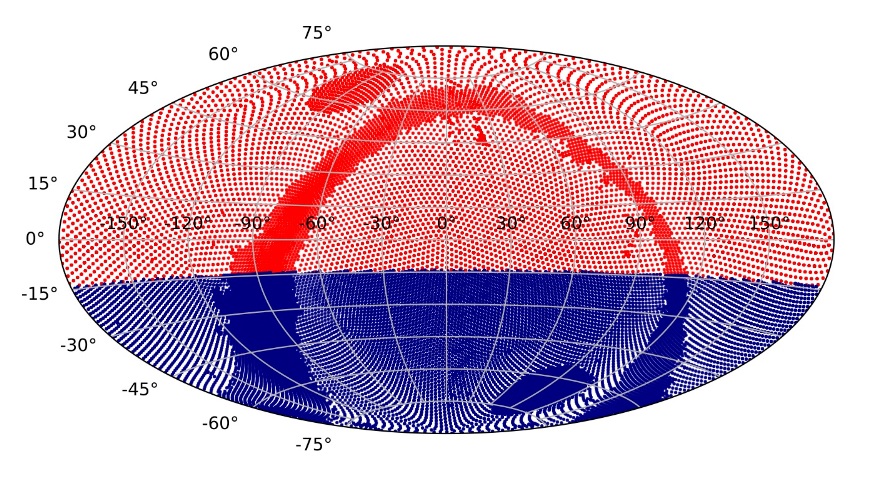Project Lead: Jennifer Sobeck, APOGEE-2 project manager; Michael Blanton, associate professor, Department of Physics, New York University; and Jose Sanchez Gallego, research scientist, Department of Astronomy
eScience Liaisons: Jacob VanderPlas
In 2020, the fifth generation of the Sloan Digital Sky Survey (SDSS-V) will undertake a 5-year spectroscopic survey of over six million objects, building on the two decade SDSS legacy of high-quality data analysis, collaboration infrastructure, and product deliverables. SDSS-V will be groundbreaking as it will conduct simultaneous optical and near-infrared spectroscopic observations from both the Northern and Southern hemispheres with new hardware that allows for rapid reconfiguration to acquire regions of high target density and targets of opportunity as well as perform time-domain monitoring. The Survey will also provide contiguous integral-field spectroscopic coverage of the Milky Way and Local Volume galaxies. In essence, SDSS-V will be the first-ever panoptic spectroscopic survey, generating a comprehensive spectral dataset from millions of sources spread across the entire sky.
SDSS-V will consist of three cornerstone programs: the Milky Way Mapper (MWM), a time- domain stellar spectroscopic survey of the Milky Way analyzing Galactic formation as well as the physics of its resident stars and interstellar medium; the Black Hole Mapper (BHM), a time-domain spectroscopic quasar survey probing black hole growth and mapping the X-ray sky; and, the Local Volume Mapper (LVM), an integral-field survey of the Milky Way and its galactic neighbors exploring star formation and the physics of the interstellar medium. The MWM and BHM pro- grams will constitute the multi-object spectrographic (MOS) component of SDSS-V and will jointly harness the newly built Robotic Fiber Positioning System (RFPS). The current SDSS plug-plate fiber system will be replaced with robotic positioners with 500 arms, 300 of which will contain both an optical and an near-infrared fiber while the remaining 200 will contain only an optical fiber. The RFPS conveys several advantages over the plug-plate system as it substantially reduces target reconfiguration time (from 20 minutes to under 2 minutes) and boosts survey efficiency as it better accounts for atmospheric refraction (which consequently increases the available observing window). With the RFPS, the targeting plan can also be modified on short timescales to permit observations of transients and other targets of opportunity.
Planning the time-domain, multi-object component of the SDSS-V Survey will be far more complex than simply covering the sky. Vital to the fulfillment of the data acquisition goals (for the specified 6 million stars) will be the development of new algorithms that optimize the targeting strategy over the duration of SDSS-V.

